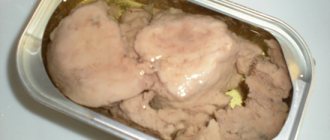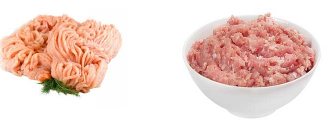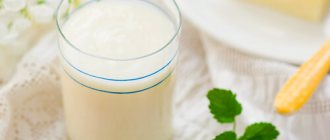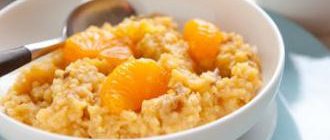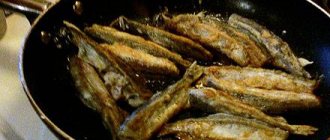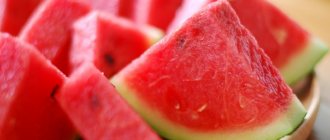Calorie content of sweet red wine per 100 grams
The calorie content of sweet red wine per 100 ml (using the example of Agora Muscat Black products) is 80 kcal. In 100 g of drink:
- 0 g protein;
- 0 g fat;
- 6 g carbohydrates.
Read: Processed cheese friendship calorie content
The composition of the wine is represented by table wine material from several grape varieties, concentrated red grape must, a food additive and a preservative.
https://youtu.be/dK1uuMNXDFc
Dry and semi-dry wine
Low-calorie - dry drinks (white and red contain approximately 2 percent carbohydrates). The average calorie content of dry wine ranges from 65 to 100 kilocalories (per 100 g). These data allow you to calculate how many calories enter the body along with a pleasant product.
There are 60 kilocalories in 100 grams of dry white wine. The same amount of dry red contains 70. The calorie content of red wine is slightly higher. Dry alcoholic drinks are the “lightest” in terms of energy.
In addition, natural dry wines are the most healthy of the entire variety of alcoholic products.
Moderate consumption of dry wine (up to 150 ml for women and no more than 180 ml for men) promotes good appetite, improves the functioning of the digestive system, has a warming effect, and relieves tension.
A glass of semi-dry drink contains more sugar, therefore its calorie content is higher. It is approximately 75–80 calories per 100 g.
Calories in a glass of red wine
The calorie content of 1 glass of red wine varies slightly depending on the type of alcohol. Thus:
- in 1 glass of sweet red wine – 120 kcal, 0 g protein, 0 g fat, 9 g carbohydrates;
- in 1 glass of semi-sweet red wine – 127 kcal, 0 g protein, 0 g fat, 6 g carbohydrates;
- in 1 glass of red semi-dry wine – 106.5 kcal, 0 g protein, 0 g fat, 2.25 g carbohydrates;
- in 1 glass of dry red wine – 103.5 kcal, 0 g protein, 0 g fat, 0.3 g carbohydrates.
How many calories are in semi-sweet white wine?
The miraculous properties of natural wine have been known to mankind for many years. The ancient Greeks used wine as an excellent antiseptic, which was added in small quantities to drinking water and used for internal and external use.
The medicinal properties of wine in Europe became known in the early Middle Ages. Wine therapy has become incredibly widespread in such traditional well-known wine-growing regions as Spain, France, and Italy.
Louis Pasteur studied the beneficial properties and positive effects of wine on the human body, and in modern medicine, French specialists still use a special Eilo table, which contains instructions for which diseases it is better to take which drink.
A healthy person only needs one glass of natural wine a day to get all the elements the body needs. When choosing a glass of wine for yourself, you should know that the calorie content of red wine is 88 kcal, while the calorie content of dry red wine is 68 kcal per 100 ml. Many people like to drink this drink precisely because the calorie content of red wine is low.
The chemical composition of wine is truly unique. This drink contains large amounts of microelements such as potassium, phosphorus, manganese, magnesium, rubidium, iodine, cobalt, vitamins B, C, PP, fruit acids, aldehydes, autocyanes, which are powerful natural antibiotics.
The antibacterial properties of wine are completely preserved, even if it is diluted with water in a 1:1 ratio. The drink is useful for colds, especially in the form of mulled wine. Hot mulled wine is simply an indispensable assistant in the fight against ARVI, bronchitis, and influenza, and the calorie content of the red wine from which it is actually made is not so high.
The healing properties of any red wine, which contains an increased amount of special tannins, also help with diseases of the digestive tract.
And the benefits of this drink are especially evident in the wound-healing effect on scars and trophic ulcers. For anemia, it is recommended to drink red table wine; fortified wines are useful for exhaustion; for urolithiasis and loss of appetite, vermouth should be consumed.
The benefits that a glass of drink will bring are not commensurate with the calorie content of semi-sweet wine.
In general, you should remember that the lower the sugar and alcohol content in the drink, the lower its calorie content. Therefore, you need to take into account that the calorie content of semi-sweet wine will be an order of magnitude lower than the calorie content of fortified red wine.
The lowest calorie content is dry red wine or dry white wine, so it is best suited for those on a diet. Wine effectively lowers blood pressure, improves metabolism, and tones the body.
Dry wine perfectly helps in the fight against vitamin deficiency, and the calorie content of dry wine is not at all high. The calorie content of dry wine does not exceed 70 kcal per 100 ml of drink, while the calorie content of semi-sweet wine reaches 100-150 kcal.
Many people know the expression “French phenomenon”.
This wine perfectly emphasizes the taste of any type of meat; it is used in the preparation of desserts and confectionery.
Natural grape red wine has many advantages:
- helps fight anemia;
- supports heart function;
- normalizes intestinal function;
- improves the body's metabolism.
Types, composition and benefits of white wine
Wine comes in several varieties; various fruits and berries are used to prepare it, but grape wine is especially popular. There are red, rose and white wines, which depends primarily on the grape variety used for its preparation.
Its caloric content also depends on the color of the drink - red wine is considered the most caloric, and answering the question of how many calories are in white wine, we can say that it is less caloric than wine made from red grapes.
In some cases the difference is slight, and some white grape wines, depending on the type, are high in calories.
All wines can be roughly divided into dry, semi-dry, sweet and semi-sweet, and how many calories you get when drinking another glass depends on which wine you prefer. If you do this in moderation and drink no more than one glass of dry wine a day, you can not only enjoy it, but also benefit from it.
Wine is an ancient drink, which over hundreds of years not only has not lost its value for humans, but has even increased it. All varieties are produced in approximately the same way, but differ in proportions and ingredients. Dry red wine appears during the fermentation of dark grape pulp, leaving less than 0.3% sugar. The strength varies from 9 to 22%.
Red wines contain a large number of diverse and beneficial substances that are extremely important for the human body. This allows you to extract the maximum positive health effects from the drink. All the myths about the health benefits of red wine are true. All this is achieved due to the following substances contained in the drink:
- Vitamins (B, C, PP);
- Organic acids;
- Microelements (Ca, Fe, Mg, Se, K, I, Zn, Cr);
- Alcohol;
- Fructose;
- Essential oils;
- Pectin;
- Rubidium;
- Tannin;
- Antioxidants;
- Flavonoids;
- Polyphenols;
- Tannins;
- Melatonin;
- Amino acids;
- Resveratol;
- Glycerol.
100 ml of drink contains 86 ml of water, 11 ml of alcohol, and the rest is taken up by other substances. Calorie content ranges from 65 to 170, depending on the variety and type. Such indicators are quite enough to give the body energy for the whole day. Red wine contains approximately 2% protein, 0% fat, and about 3% carbohydrates.
Wine is our friend, but there is deceit in it
Avicenna also considered wine a miraculous elixir of youth.
The benefit of natural wine is that it restores body tone and vitality, improves metabolic processes, and prevents the development and occurrence of atherosclerosis.
The drink contains a completely unique substance, trioxystilbene, which has the ability to slow down cell aging and prevent the development of cancer.
Table red wine literally flushes blood vessels from cholesterol, and white wines, especially semi-dry ones, increase the elasticity of blood vessels, support active cardiac activity, and significantly reduce the risk of myocardial infarction. It is useful to drink wine under conditions of unexpected stress on the body, while the calorie content of dry red wine is not high.
On the other hand, it is white wine that improves lung function and helps treat anemia, and the calorie content of white wine in 100 ml is not higher than 88 kcal. It is very difficult to answer the question of which wine brings more benefits to the body - white or red, since they are completely different from each other and, as a rule, are responsible for different areas.
Scientists agree on only one thing: it is healthier to drink dry wine than fortified or table wine, especially since the calorie content of dry wine is lower, and aging does not affect the medicinal properties, since the composition of the wine practically does not change over the years.
Another pressing question that many people ask themselves is how much wine can you drink so that it does not turn from a healing drink into poison.
Of course, there are no generally accepted standards here, but the average is still 1-2 glasses of dry wine per day for women, and a maximum of 3 glasses for men.
Some nutritionists advise diluting wine with water in a ratio of one to two and drinking this drink throughout the day instead of coffee or tea. The calorie content of semi-sweet wine is 100-150 kcal per 100 ml of drink, but this amount of fortified wine contains 200-250 kcal.
Exploring the beneficial qualities of wine, the famous French nutritionist Montignac recommends drinking a couple of glasses of dry red wine at dinner.
There is a special wine diet, which, in addition to dry red wine, also includes tomatoes, eggs, cucumbers and apples.
This diet is designed to last no more than five days, and if you follow all the recommendations, you can lose up to 6 kg of weight during this period.
There is an interesting wine diet with cheese that foreign and domestic TV stars really like.
One of the positive properties of such a diet is that, thanks to the cheese included in it, you will not have to feel hungry.
The combination of cheese and dry white wine neutralizes the harmful effects of tartaric acids, and in the three days for which it is designed, you can get rid of 2-3 kg of excess weight.
Dry and semi-dry wine
Dry wines are a product obtained through the process of complete fermentation of the sugar contained in grapes before turning into alcohol. This explains their unique taste and complete absence of sugars.
Fermentation of semi-dry wine is stopped at a certain stage, so a certain amount of sugar remains in it (from 5 to 30 grams per liter of drink).
Due to the absence or rather low sugar content, dry and semi-dry wines are considered the most healthy.
Semi-sweet wine
Not everyone loves and can appreciate the specific taste of dry and semi-dry wines. There are many connoisseurs of sweeter grape drinks - semi-sweet and dessert wines.
Semi-sweet wine is also obtained by interrupting the fermentation process of grapes. But it is stopped by sudden heating, as a result of which a certain part of the alcohol evaporates. This wine is the lightest and sweetest of the entire range of table wines.
Everything is good in moderation
The benefits of wine products are a controversial point. There are polar opposite opinions - from “wine is an absolute evil” to “wine is a cure for all diseases.” The truth, as always, is somewhere in the middle.
Drinking wine in small quantities (2-3 glasses per week) has a number of beneficial properties:
- normalization of pressure;
- preventing the formation of blood clots;
- adjusting insulin levels (an important point for women - high insulin levels increase appetite);
- removal of heavy metals from the body.
How many calories are in different types of white wine?
Many people mistakenly believe that white grape wine is made exclusively from white grape varieties, but this is far from the case and pink and even red grapes are often used for this, from which the skin is first removed, which gives the wine red shades. As for the answer to the question of how many calories are in dry white wine, it depends on many factors and is definitely difficult to answer.
Each grape variety is different in sweetness, and wine can have a different amount of alcohol, but in general, dry white wine is considered the lowest in calories - it contains approximately 65 kcal, by the way, dry red wine often has the same calorie content. Not every woman likes sour wine, and this is what dry wines are, so they prefer semi-dry, semi-sweet and sweet wine, so a logical question often arises - how many calories are in semi-sweet white wine.
Most popular dessert wines belong to this type. It is made, like dry wine, by abruptly interrupting fermentation, but in this case the wine is heated sharply, which helps remove excess alcohol. The calorie content of semi-sweet wine is, on average, 85-90 kcal, which means that a glass of such wine “weighs” about 200 calories.
Once in a department of a store offering an assortment of alcoholic drinks, many people get lost in the variety of types and varieties. In this case, it is worth paying attention to wines with well-known names, produced at enterprises with a recognizable name. One of the most popular varieties of wine is Muscat, which can be a wonderful table decoration and complement to dishes.
Naturally, the question arises, how many calories are in Muscat wine and whether it can be consumed within reasonable limits without fear of gaining extra pounds. This type of wine, the production of which is established at many well-known enterprises, has great benefits, and 100 grams of the product contains 82 kcal, so its frequent consumption may soon show up in the mirror.
One of the most popular alcoholic drinks is Sangria, which some people confuse with wine. In fact, it is a wine-based alcoholic drink, but pieces of berries and fruits, as well as brandy and dry liqueur are added to it. Therefore, it is important for lovers of this drink to know how many calories are in Sangria, especially if you want to have a good figure.
https://www..com/watch?v=
Studies have shown that 100 grams of sangria, due to the large amount of carbohydrates, contains over 170 kcal, which means that such a drink is contraindicated for those who are on a diet.
Sangria is often compared to compote, drinking it in large quantities, which is facilitated by its unique taste and smell, but this is highly undesirable, and it is better to replace sangria with wine and even beer, which is lower in calories.
The benefits of red wine
In moderation, red wine provides significant benefits to health and well-being. The beneficial properties of an alcoholic drink include:
- red wine is rich in tannin, which ensures high elasticity of blood vessels and also prevents many diseases of the cardiovascular system;
- The antioxidants in the drink slow down the aging process, reduce the likelihood of developing cancer, have a stimulating effect on the functions of the immune system, and normalize the breakdown of fats and carbohydrates;
Read: Calorie content of soup with buckwheat and potatoes
- The main component of red wine is grapes, rich in vitamins B and C;
- the benefits of wine for stimulating appetite and restoring normal gastric acidity have been proven;
- In moderation, the drink helps cope with stress.
Calories and benefits of dry wine
This alcoholic drink is produced in wineries located next to large vineyards in order for the harvested crop to be processed fresh.
After picking, the berries are destemmed, crushed and pressed, keeping the seeds intact. The wort is poured into large, wide containers for further natural fermentation. This process lasts from 7 to 10 days; it is important to stir the mass periodically to prevent the peel from drying out, which rises to the surface. During this period, the peel is saturated with useful components.
After this, the young wine is filtered several times and poured into oak barrels or into a glass container and kept for the required time.
It is very important not only to choose a high-quality and healthy aromatic drink, but also to serve it in the right container, which will allow the aroma and bouquet of the wine to reveal itself to the maximum. Dry red wine is served in glass or crystal glasses with a long stem; its shape resembles a “tulip”.
Uncork the bottle half an hour before drinking so that the drink can be sufficiently saturated with air molecules. Elite expensive wine is poured into a special wine vessel with a narrow neck and a wide base.
Dry red wine goes well with red meats: beef, veal, lamb, boiled pork and mature cheese.
Such a noble drink can be served at any feast and used to prepare various dishes. Its aroma and exquisite taste give the products a special piquancy and uniqueness.
1 kg of beef tenderloin is chopped into portions and placed in a pan. To it add 2 chopped medium onions, chopped 1 head of garlic, spices and herbs. Pour 2 tbsp. vegetable oil, juice of 1 lemon, mix and place on low heat. The meat is stewed for 3-4 hours, after which 250 ml of red wine is added to it and simmered until cooked.
- The chicken is cut into medium pieces and fried in a frying pan until golden brown. Transfer to a deep saucepan, add water, add chopped onions, carrots, beans, salt and spices. Simmer over low heat until done.
- 1 tbsp. Fry flour in a dry frying pan until golden brown, add 2 tbsp butter, 2 tbsp. red wine and 150 grams of sour cream. Pour this sauce over the chicken and simmer for 5 minutes.
Serve the dish hot or warm.
Dry red wine contains the following elements: Mono- and disaccharides, Ash, Water, Organic acids, Dietary fiber, Alcohol, Sodium, Potassium, Phosphorus, Magnesium, Calcium, Iron.
| Micro and macro element | Meaning |
| Mono- and disaccharides, g. | 0,3 |
| Zola, Mr. | 0,3 |
| Water, city | 88,2 |
| Organic acids, g. | 0,6 |
| Dietary fiber, g. | 1,6 |
| Alcohol, Mr. | 8,8 |
| Sodium, mg | 10 |
| Potassium, mg | 60 |
| Phosphorus, mg | 10 |
| Magnesium, mg | 10 |
| Calcium, mg | 18 |
| Iron, mg | 0,5 |
Dry red wine contains the following vitamins: Mono- and disaccharides, Ash, Water, Organic acids, Dietary fiber, Alcohol, Sodium, Potassium, Phosphorus, Magnesium, Calcium, Iron.
| Vitamin | Meaning |
| Vitamin B2 (riboflavin), mg | 0,01 |
| Vitamin PP (Niacin equivalent), mg | 0,1 |
| Product | Kcal | Proteins, g | Fats, g | Angle, g |
| Table Wine | 84 | 0,07 | 2,72 | |
| White Table Wine | 83 | 0,07 | 2,6 | |
| Wine Sauvignon Blanc | 82 | 0,07 | 2,05 | |
| Wines Riesling | 81 | 0,07 | 3,74 | |
| Wine Pinot Blanc | 82 | 0,07 | 1,94 | |
| Wine Chenin Blanc | 81 | 0,07 | 3,31 | |
| Red Table Wine | 85 | 0,07 | 2,61 | |
| Wine Zinfandel | 89 | 0,07 | 2,86 | |
| Wine Cabernet Sauvignon | 84 | 0,07 | 2,6 | |
| Wine Pinot Noir | 83 | 0,07 | 2,31 | |
| Chianti wine | 84 | 0,07 | 2,72 | |
| Dry white wine | 64 | 0,2 | 0,3 | |
| Dry red wine | 64 | 0,2 | 0,3 | |
| Wine | 64 | 0,2 | 0,3 | |
| Red dessert wine | 172 | 0,5 | 20 | |
| White dessert wine | 172 | 0,5 | 20 | |
| Sherry wine | 126 | 3 | ||
| Madeira wine | 130 | 10 | ||
| White semi-dry wine | 78 | 0,3 | 2,5 | |
| Red semi-dry wine | 78 | 0,3 | 2,5 | |
| Wine Cabernet Sauvignon | 83 | 0,07 | 3 | |
| Red wine Merlot | 67 | 2,5 | ||
| White wine Chardonnay | 74 | 7 | ||
| White wine Riesling | 80 | 4 | ||
| Wine Aligote | 64 | 0,2 | 0,3 | |
| Wines of Bordeaux | 67 | 2,5 | ||
| Wine Chianti | 84 | 0,07 | 2,72 | |
| Beaujolais nouveau wine | 95 | 2,5 | ||
| Apple wine | 17 | 2,5 | ||
| Fruit wine | 64 | 0,2 | 0,3 | |
| Wine Muscat | 116 | 0,25 | 8,5 | |
| Wine Kindzmarauli | 172 | 0,5 | 20 | |
| Wine Khvanchkara | 83 | 0,07 | 3 | |
| Sparkling wine | 66 | 4,5 | ||
| Pink wine | 69 | 6 | ||
| Honey wine | 71 | 21,3 | ||
| Wine Cahors | 147,5 | 16 | ||
| Madras Wine | 64 | 0,2 | 0,3 | |
| Moldavian wine Feteasca (Feteasc?) | 65 | 0,6 | 0,2 | 16,8 |
| Dessert fortified wines | 172 | 0,5 | 20 | |
| Tokaj wines | 64 | 0,2 | 0,3 | |
| Wine Prosecco | 75 | 0,3 | 1,5 | |
| Wine Marsala | 172 | 0,5 | 20 | |
| Wine Chablis | 85 | 0,2 | 0,3 | |
| Malaga wine | 172 | 0,5 | 20 | |
| Dessert wines | 172 | 0,5 | 20 | |
| Strong wines | 163 | 0,4 | 12 | |
| Liquor wines | 212 | 0,5 | 30 | |
| Semi-dessert wines | 140 | 0,4 | 12 | |
| Semi-sweet white and red wines (including champagne) | 88 | 0,2 | 5 |
We suggest you read: Burnt in a solarium: how to remove redness
Despite the fact that wine products are slightly treacherous, doctors still agree that consuming them in small quantities will benefit human health. First of all, we mean white species. Having a low strength and low energy value, grape drinks contain many useful substances - organic acids, mineral salts and vitamins.
Regular consumption of karse wine in small doses has a beneficial effect on the functioning of the heart and the cleansing of blood vessels.
Dry red wine has a higher calorie content than white wine, but despite this, it is considered much healthier than white wine. This is due to the fact that it contains resveratrol (the strongest natural antioxidant) in large quantities. In addition, resveratrol also has anti-inflammatory properties.
To be fair, it is worth noting that this element is found in the juice of black and red grapes.
White in small doses is an excellent prevention of the development of Alzheimer's disease; therefore, doctors sometimes recommend it to people in old age. The recommended daily dose is approximately 150 milliliters per day. Let us remind you that dry white wine has a calorie content of no more than 66 kcal.
